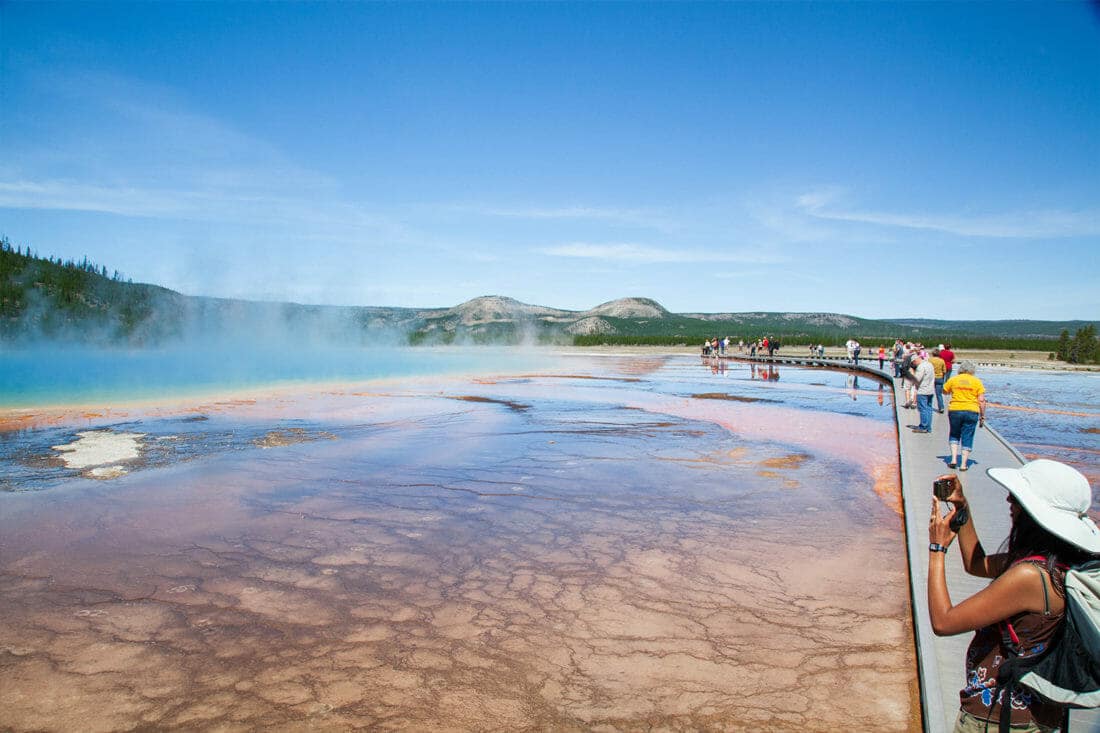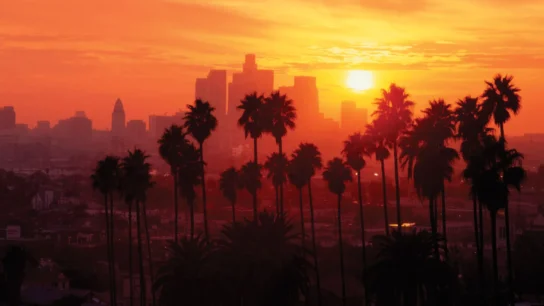Introduction to Yellowstone National Park
Nestled amidst the rugged landscapes of Wyoming, Montana, and Idaho, Yellowstone National Park stands as a testament to the awe-inspiring beauty and natural wonders of the American West. Spanning over 2.2 million acres, this iconic wilderness sanctuary is home to a diverse array of geothermal features, pristine rivers, verdant forests, and abundant wildlife. Choosing the right time to visit Yellowstone is crucial for maximizing your experience and witnessing the park’s splendor in its full glory.
Yellowstone National Park offers something unique in every season, from the vibrant blooms of spring to the snowy landscapes of winter. Understanding the seasonal nuances and planning accordingly can significantly enhance your adventure and ensure an unforgettable journey through this untamed wilderness.
Understanding Yellowstone’s Seasons
Spring:
As nature awakens from its winter slumber, Yellowstone bursts into life with a kaleidoscope of colors and sounds. Spring heralds the arrival of migrating birds, emerging wildflowers, and newborn wildlife, making it an ideal time for nature enthusiasts and photographers. However, unpredictable weather and lingering snow can pose challenges for travelers, so be prepared for varying conditions and road closures.
Summer:
Summer is peak season in Yellowstone, attracting throngs of visitors eager to explore the park’s wonders under the warm sun. With long daylight hours and mild temperatures, summer offers ample opportunities for outdoor adventures, including hiking, camping, and wildlife watching. However, be prepared for crowds and limited accommodation availability, especially in popular areas like Old Faithful and Yellowstone Lake.
Fall:
As the leaves turn golden and the air takes on a crisp edge, fall casts a spell of tranquility over Yellowstone. The park’s landscapes are transformed into a patchwork of vibrant hues, creating a stunning backdrop for hiking, photography, and wildlife viewing. Fall also marks the rutting season for elk, offering a chance to witness thrilling displays of mating behavior. With fewer crowds and cooler temperatures, fall is a favorite season for those seeking solitude and natural beauty.
Winter:
In winter, Yellowstone is transformed into a magical wonderland blanketed in snow and ice. While many roads and facilities close during this time, the park remains open for adventurous souls eager to explore its frosty landscapes. Winter activities abound, from cross-country skiing and snowshoeing to wildlife tracking and ice fishing. The geothermal features, such as Old Faithful, take on a surreal beauty against the backdrop of snow-covered forests, making winter an enchanting time to visit for those willing to brave the cold.
Weather Patterns and Climate in Yellowstone
Yellowstone’s weather is as diverse as its landscapes, with temperatures and conditions varying greatly depending on the season and elevation. Summers are generally mild, with daytime temperatures ranging from 70 to 80°F, while winters are cold and snowy, with temperatures often dipping below freezing. Spring and fall can be unpredictable, with fluctuating temperatures and the possibility of snowfall in higher elevations. It’s essential to check the weather forecast and pack accordingly, especially if you plan to visit during the shoulder seasons or winter months.
Wildlife Viewing Opportunities
Yellowstone is renowned for its abundant wildlife, including iconic species such as bison, elk, wolves, and grizzly bears. Each season offers unique opportunities for wildlife viewing, from the arrival of newborn animals in spring to the winter migrations of bison and elk. Spring and fall are considered prime times for wildlife photography, as animals are more active and visible during these transitional seasons. Summer can also provide excellent wildlife sightings, although the park’s popularity may result in more crowded viewing areas.
Geothermal Features and Natural Wonders
At the heart of Yellowstone’s allure are its spectacular geothermal features, including geysers, hot springs, mud pots, and fumaroles. The park is home to over half of the world’s geysers, with the iconic Old Faithful being the most famous among them. While these geothermal wonders are accessible year-round, their appearance and behavior can vary depending on the season. Spring and summer are ideal for witnessing the full force of geysers and hot springs, while winter adds a magical touch with steam rising from snow-covered pools.
Outdoor Activities and Recreational Opportunities
Whether you’re an adrenaline junkie or a nature lover, Yellowstone offers a wealth of outdoor activities to suit every taste and interest. In spring and summer, visitors can enjoy a plethora of activities, including hiking, fishing, boating, and wildlife watching. Fall brings opportunities for scenic drives amidst vibrant foliage, while winter transforms the park into a playground for winter sports enthusiasts. Cross-country skiing, snowshoeing, snowmobiling, and ice fishing are just a few of the winter activities available for adventurous travelers.
Camping and Accommodation Options
Yellowstone offers a range of accommodation options to suit every budget and preference, from rustic campgrounds to luxurious lodges. Camping is a popular choice for nature enthusiasts, with numerous campgrounds scattered throughout the park offering tent and RV sites. For those seeking more comfort and convenience, Yellowstone also features historic lodges, cozy cabins, and modern hotels both inside and outside the park. It’s essential to book accommodation well in advance, especially during peak season, to secure your preferred dates and location.
Crowd Levels and Visitor Experience
Crowd levels can vary significantly depending on the time of year you visit Yellowstone. Summer is undoubtedly the busiest season, with peak visitation occurring between June and August. During this time, popular attractions and viewpoints can be crowded, and accommodation may be fully booked months in advance. Fall and spring offer a more peaceful experience, with fewer visitors and ample opportunities for solitude and serenity. Winter is the quietest season in Yellowstone, with fewer services and facilities available but plenty of opportunities for solitude and unique winter experiences.
Safety and Preparedness Tips
Yellowstone’s rugged wilderness can present hazards for the unprepared traveler, so it’s essential to prioritize safety during your visit. Wildlife encounters are common in the park, so always maintain a safe distance from animals and never approach or feed them. Be prepared for changing weather conditions by dressing in layers and carrying essential gear such as water, snacks, and a first-aid kit. Practice Leave No Trace principles by respecting wildlife and natural habitats, disposing of waste properly, and staying on designated trails.
Budget-Friendly Travel Tips
Traveling to Yellowstone on a budget is possible with careful planning and smart decision-making. Consider visiting during the shoulder seasons of spring and fall when accommodation rates are lower, and crowds are thinner. Look for budget-friendly accommodation options such as campgrounds or rustic cabins, and consider bringing your food to save on dining expenses. Purchasing a National Park Pass can also help save money on entrance fees if you plan to visit multiple parks during your trip.
You read also more : best bachelorette party destinations
Best Photography Spots and Tips
Yellowstone is a photographer’s paradise, offering endless opportunities for capturing stunning landscapes, wildlife, and natural phenomena. Some of the best photography spots include iconic landmarks such as Old Faithful, Grand Prismatic Spring, and Yellowstone Lake. To capture the park’s beauty in its best light, consider visiting during the golden hours of sunrise and sunset when the soft, warm





